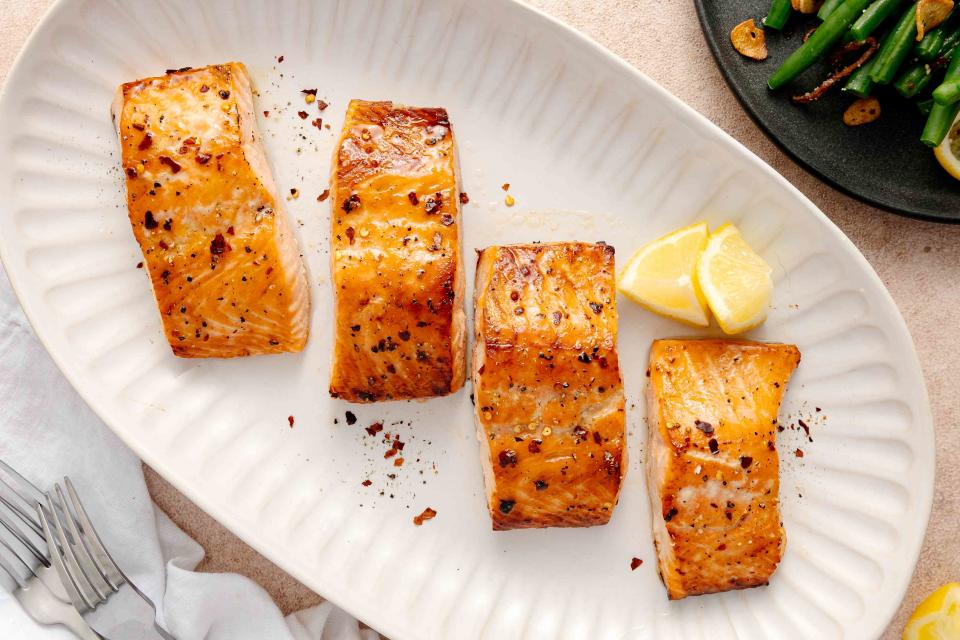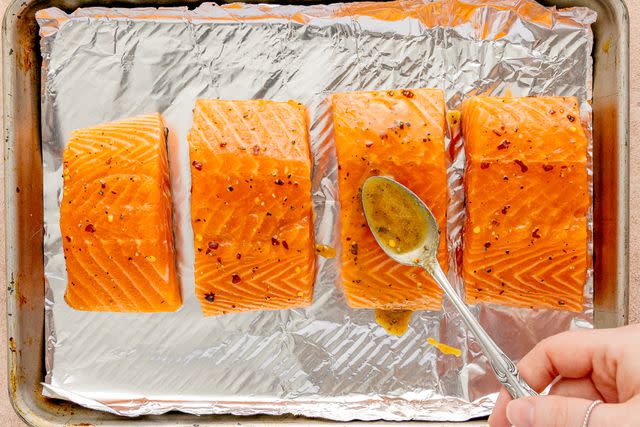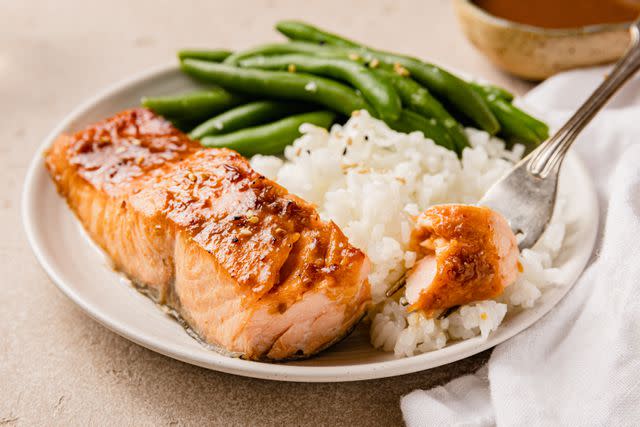The 1-Ingredient Upgrade for Better Baked Salmon (Works Every Time)
It's been my go-to weeknight dinner for over 20 years, and I never skip this one ingredient.

Simply Recipes / Ciara Kehoe
It’s always good to have low-work, high-payoff recipes up my sleeve. They’re handy on demanding days when I don’t feel like cooking but want a quick, easy, and nourishing home-cooked meal. That's why I turn to baked salmon often. My kids have eaten it once a week their whole lives and likely think salmon is the only edible fish. And I’ve never heard a peep that they’re tired of eating it—that’s a win!
I attribute the appeal of baked salmon—whether it’s simply seasoned with salt and pepper or topped with a glaze—to one ingredient I always use to season it: shiro (white) miso. It’s my secret weapon for turning this fatty fish into a weeknight dinner centerpiece. It’s salty, earthy, and funky, which translates to flavor, flavor, and more flavor without overwhelming the fish or the other ingredients.
What Is Shiro Miso?
Miso is a Japanese seasoning (though it’s believed to have originated in China and Korea) made by fermenting soybeans. The practice of making miso is millennia-old and there are thousands of varieties.
In America, miso is categorized by its color—red, white, or yellow. The color generally points to how the miso will taste. Light miso (white or yellow) is mellower and sweeter. Dark miso (red or brown) is saltier and funkier.
Shiro miso, often labeled as white miso, is sweet, has a light floral aroma, and isn't too salty. My favorite brand for everyday cooking and seasoning salmon is Hikari Organic White Miso. Though I get through a full container every month, it can last for a year or longer if tightly covered and refrigerated.

Simply Recipes / Ciara Kehoe
How To Use Miso on Baked Salmon
The no-measure glaze I make most often is:
2 tablespoons shiro miso
2 tablespoons maple syrup or agave syrup
2 tablespoons low-sodium soy sauce
1 or 2 cloves garlic, grated
1/4 teaspoon ground black pepper
This makes enough to marinate about 1 1/2 pounds of salmon. Combine the ingredients in a small bowl. Spoon and spread it on top of the salmon. Just one side of the fish, the skinless side, is sufficient.
I turn the oven on at this point so that the fish marinates during the 10 to 15 minutes it takes to get it to 425°F. That's plenty of time for the salmon to absorb the flavor, but it isn’t necessary to marinate it—you can bake it right away, even in an air fryer.
Beyond this method, I add shiro miso to any baked salmon recipe, whether it's simply seasoned with lemon and herbs, wrapped in parchment with fennel, or with a brown sugar and mustard glaze. Smear one tablespoon of shiro miso directly on the fish or stir it into the marinade or glaze. Miso is salty, so I either don’t add salt or reduce it by at least half. You won't taste the miso, but you'll notice the oomph in flavor.

Simply Recipes / Ciara Kehoe
My Tips for Buying and Cooking Salmon
My expertise with salmon is defined by my needs. I'm often cooking under the pressure of melty, hangry children, so the fish needs to cook quickly and without me having to babysit it. That's why I only bake it in the oven and have done so nearly a thousand times over the past 10 years. With that in mind, here is what I prioritize when buying and cooking salmon:
Portioned salmon filets are smaller and will cook faster than a whole piece. It’s a matter of five to 15 minutes, and when the kids’ bedtime is 8 p.m. every minute matters. Either buy it pre-portioned or portion it yourself.
If possible, buy a cut from the center of the fish away from the tail or the neck. The width and thickness of the portions will be closer in size, which means they'll cook more evenly.
Take the fish out of the fridge the moment you get home from work or an hour before you want dinner on the table. This gives it a chance to shed some chill so that it cooks quickly and evenly.
Don’t remove the skin. It isn’t worth the effort. Bake the salmon skin-side down and marinate only the skinless side. The skin will act as a barrier between the flesh and the baking dish. Leave it behind on the baking dish when you scoop the salmon up to serve.
Read the original article on Simply Recipes.

